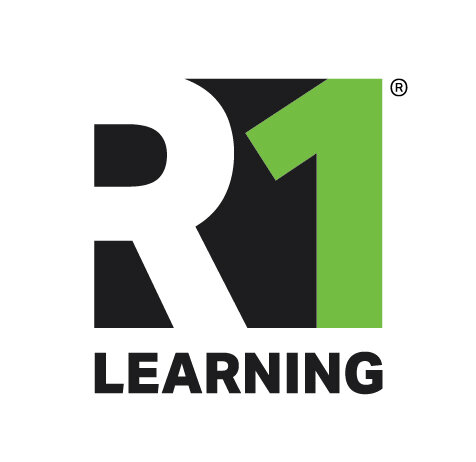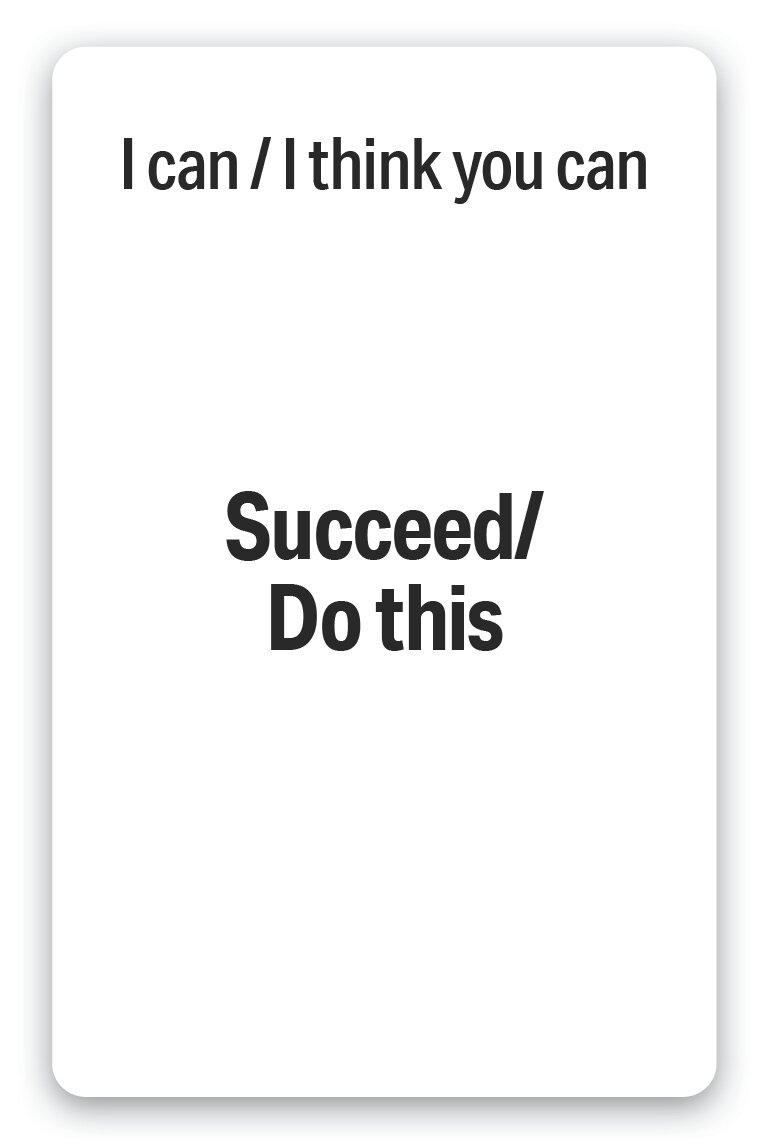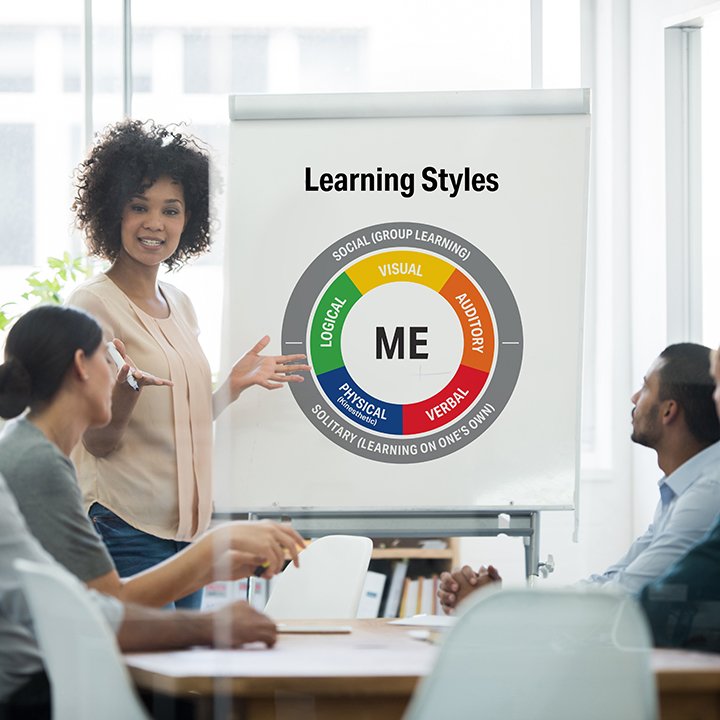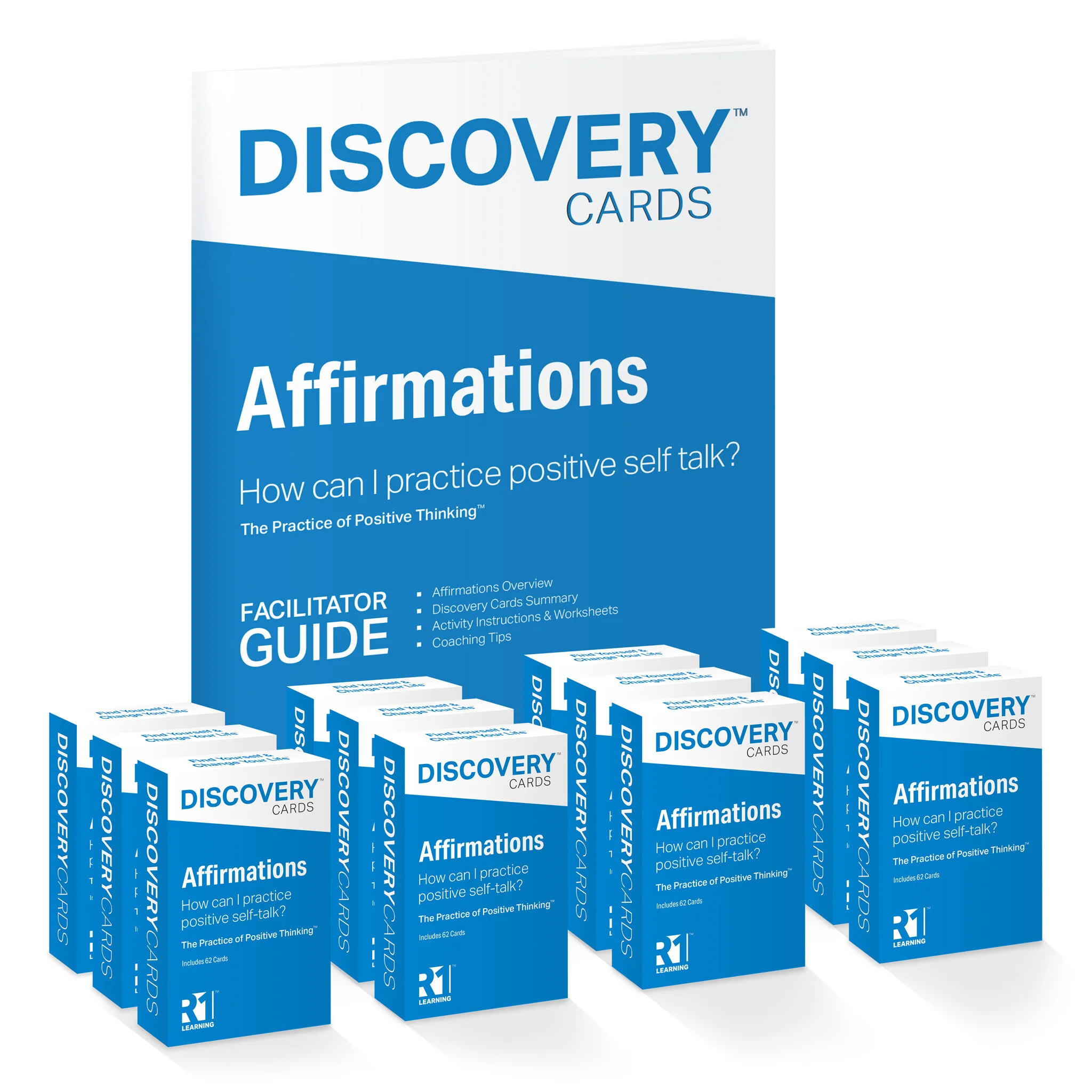Affirmations — The Practice of Positive Thinking
Building new positive stories and beliefs about oneself takes time. They result from frequent and consistent re-connection with core values, new healthy choices and behaviors, and a shift in the fundamental thinking that one can achieve through self affirmations.The more we practice and incorporate these new beliefs into our mindset, the more we will achieve their benefits. Affirming others is another opportunity to practice this concept. Everyone can benefit from the practice of affirmations.
What are affirmations? An affirmation is a positive statement or thought about oneself or another person. An affirmation can also be a meditation or prayer that focuses on a positive outcome. They are often used to counteract self-sabotaging and negative thoughts. Affirmations can be thought of as a statement of truth about what one aspires to be in life. But affirmations are best when they are practical and achievable — not wishful thinking such as “if I visualize money I’ll get rich.” Aspirations are best practiced through repetition — repetition allows the affirmation to “reprogram” the subconscious and reframe the negative belief in a more positive light. Self-affirmation means, simply, using this technique to affirm oneself.
Why do affirmations work? The psychologist Claude Steele first proposed self-affirmation theory in the late 1980s, and it remains a well-studied theory in social psychological research. Self-concept, or sense of self, is an important component of self-affirmation theory. By sense of self, we mean the values, beliefs, and roles (at home, at work, in life) that we identify with that help us define who we are as individuals. When we are confronted with a disturbance resulting from a person, place, thing, or situation that threatens our sense of self (for example, a criticism from a loved one, boss, or co-worker), we experience distress and react defensively. This defensive reaction makes it difficult to react effectively to solve the problem at hand. The practice of affirming an important value from one’s broader life context helps us shift our perspective about this information that contradicts or threatens our sense of self. Affirmations diminish the perceived threat to one’s sense of self, and allow less defensive and more effective action. This is the core of self-affirmation theory.
How does one build a positive sense of self? The practice of self-affirmation builds a positive sense of self by allowing the individual to reflect on a personally relevant value, belief, or role. It might also involve engaging in activities that evoke a personally relevant value, such as helping a friend, acting with integrity at work, or being a good parent or family member. Over time, practicing self-affirmation builds a strong positive foundation for a sense of self from which to draw. When individuals are faced with a situation that threatens their sense of self, these memories serve to remind them of the broader self-worth, values, and beliefs by which they define themselves and their lives. This self-awareness and change of perspective shifts attention away from the situation that conflicts with or threatens the sense of self toward a larger context of who they are. When people operate from this broader perspective, they tend to react less defensively to the threatening situation, which allows them to act more effectively. Investigations of self-affirmation theory suggest that the practice also improves academic performance and health.
How does this theory play out in real life? Kate’s father berates her about her lack of punctuality in getting to school on time. Tom loses his job because of his lack of accountability for work performance goals. Kim is divorced by her spouse for lack of trust. These are all examples of situations that threaten one’s sense of self. Let’s look deeper at Kim’s situation. Through the practice of self-affirmation, Kim builds resiliency by affirming herself for being a caring mother and competent medical professional. Although the loss of her marriage is hurtful to her self-esteem, Kim uses her practice of self-affirmation to see a broader picture of her self-worth, enabling her to better cope with her failed marriage. She is able to move past the hurt feelings from the distress of losing her relationship with her husband, and start taking action for building new relationships and a new life.
Explore R1 Discover — Interactive Engagement Tools
Affirmations Defined — The Practice of Positive Thinking
The internal dialogs that play in the minds of individuals are the result of past and recent experiences and help frame one’s values, beliefs, internal sense of self-worth, and reactions to external circumstances. The stories individuals tell themselves come from many sources — childhood, family and friends, and even recent experiences or events. These beliefs and stories can be both positive and negative, can be grounded in facts or made up, and can have tremendous impact on one’s sense of self, relationships, choices, behavior, and overall sense of well-being. If negative, they can be fuel for unhealthy behaviors or barriers to life aspirations. If positive, they can be the foundation and springboard for living a healthy and meaningful life.
The Discovery Cards include over fifty (50) affirmations to explore. See twelve (12) affirmation examples below. The Affirmations Facilitator Guide provide background and situational activities to bring the Discovery Cards to life in both one-on-one and groups settings. Use the list below to think about yourself and then answer the Questions to Explore below.
Questions to Explore
Answer these questions for yourself or someone you are working with.
What did your find most helpful when reading the background and theory on affirmations? Does it make sense from your own experience? Explain.
Which affirmations did you pick from the list? What resonated with you about each?
What stories or beliefs are you trying to change? What would be the benefits for you if your could shift your thinking in these areas?
Are you open to practicing affirmations for a week or a month? What would be the best time and place during your day to include this new practice?
Who can you ask for help and support in sharing what you learn from practicing affirmations on a daily basis?
My Story — My Learning in developing the Affirmations Discovery Cards
My journey with the creation of the Discovery Cards has offered countless opportunities to meet some of the experts in the field, explore the latest research, and learn the key concepts in each of the topic areas. It has also given me the opportunity to relate what I’m learning to my own experiences and recovery journey. Several of the topics, such as Healthy Boundaries, Emotions and Feelings, and Relapse Phases & Warning Signs, have been eyeopening for me. New doorways of insight have been opened, and I can see much more clearly some of the roots and patterns of my unhealthy behavior. One topic that I didn’t expect to gain such insight from was this one — Affirmations — but I was pleasantly surprised during its development.
My first exposure to the concept of affirmations was in treatment in 2014. It was a part of every community group meeting — we had the opportunity to affirm ourselves or others as part of the group process. I’ve always prided myself on appreciating the people in my professional, social, and family relationships and communicating that appreciation to them. It was something I had already incorporated into my daily life. But what I’ve learned through my work at R1 Learning is that a strong motivator for me to do this was to please others, make them feel good, and therefore have them like me. People-pleasing has definitely been part of my personality, and as my addiction progressed, I found myself not pleasing people and having them not like me, which made my journey and struggle even more difficult.
What I now see, as I’ve moved toward healthier behavior, is that I can lessen these issues when I practice building my own internal strength, explore and rebuild my beliefs, and establish firmer footing in what I believe about myself, without the need for others’ approval. The ground gets firmer when I do this. My emotional well-being improves too as it helps reduce my shame and guilt, lessen my emotional triggers, and counteract those negative voices when they emerge during the challenges of daily life. In the initial development of this Discovery Cards deck, I included many affirmations that, by their very nature, required others to validate them — that is, they were not valid self-affirmations. For example, physical appearance, or wanting to be attractive or desirable to others. couldn’t believe they had made it so far down the path in our development process, primarily because I was protecting them as we cut and edited the lists. I am happy to report that I finally was able to see the error in my thinking, and these affirmations did not make the final cut. The final set are those affirmations that you can affirm on your own, without external input. What a learning for me! As you think about the affirmations you seek, see if they require external validation or if they can be validated internally, on your own, for yourself, without others’ input. As you do this, I hope you too will gain the insight I did, and begin to build your own internal strength. Most important, remember — it’s all about practicing this new mindset. Practice, practice, practice.
References
Cohen GL, Sherman DK. “The Psychology of Change: Self-Affirmation and Social Psychological Intervention.” Annual Review of Psychology 65:333–371, 2014 Cohen GL, Sherman DK. “Self-Affirmation Theory,” in Encyclopedia of Social Psychology, pp 787–789. Edited by R. Baumeister R, Vohs K. Thousand Oakes, CA, SAGE Publications, 2007
Sherman DK, Cohen GL. “The Psychology of Self-Defense: Self-Affirmation Theory,” in Advances in Experimental Social Psychology. Edited by Zanna MP. Vol 38, pp 183–242. New York, NY, Guilford Press, 2006
Steele CM. “The Psychology of Self-Affirmation: Sustaining the Integrity of the Self.” Advances in Experimental Social Psychology 21:261–302, 1988John L. Holland, 1919–2008: A Select Bibliography added to the Tribute & Obituary". NCDA. November 2, 2008. Retrieved December 7, 2015.
Copyright 2023 R1 Publishing LLC / All Rights Reserved. Use of this article for any purpose is prohibited without permission.
R1 Train-the-Trainer — Build Your Organization’s Capability
Two-day Program (virtual or in-person)
Enable your organization to train internal practitioners and staff on how to implement the R1 Learning System effectively .
The R1 Learning System provides an engaging, interactive, and personalized approach for training practitioners and engaging individuals in service. The R1 Train-the-Trainer program will provide the training, tools, and resources to engage different populations and settings and practitioners at all levels of knowledge, skill, and experience.
Contact us today to learn more about how your organization can cost effectively build internal capability to deliver the R1 Learning System.
Engage, Educate, and Equip Your Practitioners
Affirmation Toolkits and Resources
The R1 Learning System and the Discovery Cards Group Kits enable programs to implement workforce training programs strategically. Contact us to learn more about how to best implement the R1 Affirmations topic in your program, train your team, and engage clients in service. Visit the R1 Store to learn more about our training, tools, and technology resources. The Discovery Cards are an amazing tool for exploring these topics with individuals or groups.
Here are a few ideas to help you learn more about R1 and engage others on this topic:
Share this blog post with others. (Thank you!)
Start a conversation with your team. Bring this information to your next team meeting or share it with your supervisor. Change starts in conversations. Good luck! Let us know how it goes.
Visit R1LEARNING.com to learn more about R1, the Discovery Cards, and how we’re creating engaging learning experiences through self-discovery.

























